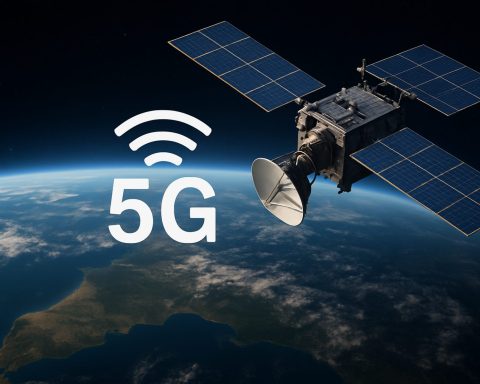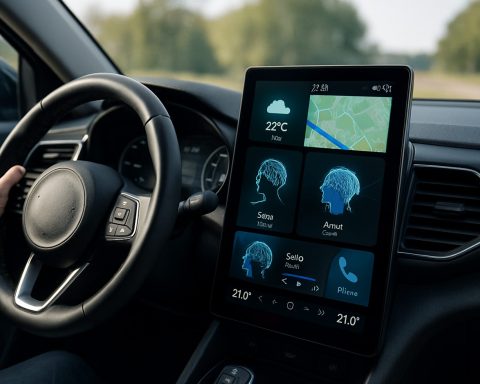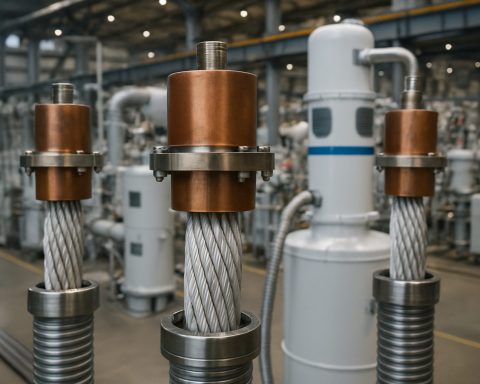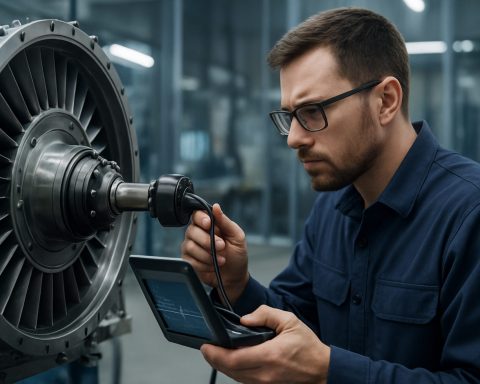- Nissan’s e-Power system uniquely combines a gasoline engine with a full electric motor, offering a near-EV experience without plug-in charging or range anxiety.
- The system’s electric motor always powers the wheels, delivering smooth, silent acceleration typically found in fully electric vehicles.
- Unlike traditional hybrids, e-Power eliminates frequent switching between gasoline and electric modes—gasoline only recharges the battery.
- Next-generation solid-state batteries are in development, promising lighter, faster-charging, and longer-lasting power for future Nissan EVs.
- This innovative approach is key to Nissan’s recovery strategy, aiming to bridge the gap between gasoline and electric worlds while improving convenience and environmental impact.
Electric dreams hum quietly through Nissan’s latest showrooms, as the battered automaker wagers the company’s future on a technology that defies the usual EV script. With its e-Power system, Nissan is charting a path that’s neither fully electric nor conventionally hybrid—a distinctive turn in an industry gripped by transformation.
Inside the sleek shell of models like the Qashqai, X-Trail, and Note, a gasoline engine rarely grabs the spotlight. Instead, it acts as an unheralded generator, which exclusively feeds an electric motor. Even at freeway speeds, the wheels are spun by battery-driven power alone, and drivers float on a surge of silent torque usually reserved for pure EVs. Yet, when the battery needs juice, there’s no socket or plug-in ritual; a stop at the gas station suffices, sidestepping “range anxiety” that plagues many on longer drives.
Nissan’s approach stands apart from rival hybrids, such as Toyota’s vaunted Prius, which frequently shuffle power between engine and motor. Here, the electric motor takes center stage, bestowing buttery-smooth acceleration and the serene hush of battery propulsion—a near-EV experience without the logistical headaches.
This innovation arrives at a precarious moment. The automaker, a pioneer with the 2010 debut of the all-electric Nissan Leaf, has been bruised by financial setbacks, including a staggering $4.5 billion loss last fiscal year. Its global recovery plan is sweeping: thousands of jobs will be cut, plants streamlined, and the staid product lineup overhauled. North America—where fuel prices and customer habits differ—remains both challenge and opportunity.
But beneath the corporate turbulence, engineers race forward. Next-generation solid-state batteries are on the horizon, promising lighter, faster-charging, longer-lasting power compared to today’s lithium-ion standard. Nissan eyes these advances to underpin its e-Power evolution and future EVs—staking its case on science and ingenuity once more.
The automaker’s strategy leans into the appeal of innovation that meets consumers where they are: offering a bridge between gasoline and electric worlds, with none of the extremes. For drivers, there’s the promise of environmental gains and convenience; for Nissan, a shot at relevance in a turbulent global market.
The lesson is simple yet profound: survival in the electrified age demands more than copying the leaders—it rewards those who dare to reimagine the rules. As Nissan presses ahead with e-Power and beyond, the world watches, ready to see if a quiet tech gamble can spark a roaring comeback.
Nissan’s Quiet Gamble: How e-Power Could Change Your Next Car—and the EV Market Forever
Unpacking the Nissan e-Power Revolution: Beyond the Buzz
Nissan’s e-Power technology isn’t just a clever hybrid gimmick. It represents a crucial bridge between conventional gasoline vehicles and full battery electric vehicles (EVs) at a time when consumer needs and charging infrastructure are still evolving worldwide. Here’s what you need to know, including key facts, trends, expert insights, and actionable recommendations.
—
What Makes Nissan e-Power Unique?
1. Series Hybrid Architecture:
Unlike Toyota’s Prius (a parallel hybrid), Nissan e-Power uses a series hybrid layout:
– The gasoline engine never drives the wheels directly.
– It operates as a generator to charge the battery, which exclusively powers the electric motor responsible for propulsion.
– This offers an “EV-like” driving feel, with instant torque and buttery-smooth, quiet acceleration.
2. No Plug Required:
– You don’t have to plug in to charge. Instead, just fuel up at any gas station, eliminating “range anxiety.”
– Ideal for regions where EV charging infrastructure is insufficient.
3. Real-World Efficiency:
– Urban stop-and-go driving maximizes efficiency (due to regenerative braking and optimized engine use).
– Highway driving may see conventional hybrids catch up in fuel economy due to continuous engine operation.
Features, Specs, & Pricing
Featured Models:
– Nissan Qashqai e-Power
– Nissan X-Trail e-Power
– Nissan Note e-Power (popular in Japan and Europe)
Typical Specs:
– Electric motor outputs: 187 – 201 hp (varies by model)
– Battery: 1.5 kWh lithium-ion (not designed for long EV-only range)
– Real-world mileage: ~45–53 mpg combined (varies regionally)
Pricing:
– Qashqai e-Power typically commands a premium over conventional ICE models—starting around £32,000 in the UK.
How-to: Making the Most of e-Power
1. City Commutes:
Frequent short trips and traffic jams? e-Power’s smooth, quiet operation shines.
2. Road Trips:
No need to plan charging stops—just refuel at any gas station and go.
3. Maintenance:
Regular servicing is simpler than most hybrids: the engine operates under optimal conditions, reducing wear and tear.
—
Industry Trends & Market Forecasts
– Hybrid Growth: As EV adoption is slowed by high upfront costs and charging gaps, series hybrids like e-Power offer a pragmatic alternative.
– Future Tech: Nissan is betting on solid-state batteries—lighter, safer, and capable of faster charging and higher energy density—expected in production around 2028 (Nissan).
– Global Expansion: e-Power has seen strong adoption in Japan, is expanding in Europe, but faces hurdles in North America due to fuel price differences and market preference for larger vehicles (Nissan, industry analysts).
—
Pros and Cons: What Owners and Experts Say
Pros:
✔️ EV-like driving experience without charging hassles
✔️ No range anxiety—fuel anywhere
✔️ Lower tailpipe emissions than conventional petrol
✔️ Lower noise and vibration
Cons:
❌ Slightly higher purchase price
❌ Not a “true” EV—still dependent on gasoline
❌ Underperforms pure hybrids in sustained highway driving
❌ Battery too small for meaningful electric-only range
—
Comparisons: Nissan e-Power vs. Toyota Hybrid vs. Plug-In Hybrid
| Feature | Nissan e-Power | Toyota Hybrid (Prius) | Plug-In Hybrid (PHEV) |
|—————-|:————–:|:——————–:|:———————————:|
| Needs Plug? | No | No | Yes/No (optional) |
| Electric Drive | Always (via battery) | Sometimes | Yes (limited range) |
| Gas Usage | Generator only | Both drive wheels | Wheels & generator |
| Range Anxiety | No | No | No (with gasoline backup) |
| EV Experience | Closest | Partial | Full EV (short range) |
—
Pressing Questions Answered
Q: Does e-Power reduce emissions as much as a full EV?
Not quite. Tailpipe emissions are lower per mile than ICE cars, but higher than a true EV—since the generator still burns gasoline.
Q: Is it a good investment for the future?
For cities and regions where charging infrastructure is lacking, e-Power provides an excellent near-term solution—combining EV driving feel with the flexibility of gasoline refueling.
Q: How does e-Power impact resale value?
Hybrids and advanced powertrains are increasingly attractive for secondhand buyers, especially as restrictions on older gasoline cars tighten in urban centers.
—
Controversies and Limitations
– Greenwashing Claims: Critics argue e-Power isn’t a substitute for fully electric vehicles, but Nissan positions this as a “transition” technology, not a destination.
– Market Uncertainties: Nissan’s financial instability could affect long-term service, support or tech updates—something to monitor closely.
– Incentives: e-Power models may not qualify for EV tax incentives in some regions.
—
Security, Sustainability & Reliability
– Reliability: Fewer mechanical parts stressed by driving (engine optimized), but battery replacement costs could rise after warranty.
– Eco Footprint: Better than gas-only, but the use of rare metals for batteries still has environmental impact (less than pure EVs).
– Safety: e-Power vehicles come standard with advanced safety tech, but always check IIHS or Euro NCAP ratings for your region.
—
Actionable Recommendations & Life Hacks
– For City Drivers: Consider e-Power for noise and pollution reduction where pure EVs are impractical.
– For Rural/Suburban Buyers: Leverage flexibility—no need to install a home charging system.
– Quick Tip: Use eco or EV mode for max efficiency in traffic; schedule routine maintenance on the generator engine for best longevity.
—
Final Prediction: The Road Ahead
As battery tech evolves (watch for solid-state breakthroughs), Nissan’s e-Power strategy could become either a future-proofed bridge—or a short-lived stepping stone. For now, it’s a compelling option for drivers wanting an “almost-EV” without changing their entire lifestyle. Stay tuned to official news from Nissan for real-time updates.
—
Ready to drive the future, with none of the EV hassles? Nissan e-Power just might be your next smart move.










